Renaissance Romagna: on the trail of Leonardo da Vinci and Lucrezia Borgia
We begin today a series of articles that will take you on a discovery of Renaissance Romagna: six itineraries through the provinces and municipalities of this territory, between art and nature, where some of the most important seigniories of the Renaissance, such as the Este and Malatesta families, left their imprint forever, where great artists designed and worked on their works, and where famous people of the past came and went, writing pages of history.
The first itinerary Leonardo da Vinci and Cesare Borgia: Ingenuity and Intellect at Court takes us between the provinces of Forlì-Cesena, Ravenna, Rimini and Ferrara, and to the city of Imola, following in the footsteps of Leonardo da Vinci, who in 1502 undertook a journey to the land of Romagna, called by Cesare Borgia, the natural son of Pope Alexander VI and also known as the Valentino, to equip the conquered lands of Romagna with up-to-date civil and military infrastructure. The appellation “Valentino” came from Louis XII, who called him to France and created the duchy of Valentinois for him. Cesare Borgia and Leonardo had met in 1499 in Milan, when the artist was serving at the court of Ludovico il Moro, and given his marked talents also as a military engineer, to the Borgia Leonardo da Vinci seemed the right person to whom to entrust this task. An official document of this investiture is considered to be the letter patent issued on August 18, 1502, discovered and published in 1792, in which Cesare Borgia defines Leonardo as his “Architecto et Ingegnero Generale” who was to “see, mesurare, et bene extimare” for the purpose of “considering li Lochi et Forteze e li Stati nostri, Ad ciò che secundo la loro exigentia et suo iudicio possiamo provederli.” Leonardo was thus supposed to identify and design military and civil works suitable for defense against enemies and the consolidation of his power in the conquered lands of Romagna. On the so-called Codex L, thanks to which we still have evidence of this reconnaissance, he jotted down memos and observations on fortifications, excavation of the land, the motion of water, technological problems, studies on the flight of birds, and notes on arithmetic.
The itinerary promoted by Visit Romagna touches Cesena, Forlì, Faenza, Solarolo, Imola, Rimini, San Leo, Sogliano al Rubicone, Cesenatico, and Pennabilli; in most of these places Leonardo da Vinci passed through to fulfill this commission entrusted to him by Cesare Borgia.
On August 8, 1502, Leonardo was in Rimini, where he focused in particular on ditch-excavation tools and problems strictly related to war events, but his attention also turned to complex acoustic systems to be used during court feasts, given his passion for musical instruments. A center of the Malatesta seigniory, Rimini still offers wonderful traces of its Renaissance past: Castel Sismondo, the fortress-residence of Sigismondo Pandolfo Malatesta, which now houses part of the Fellini Museum, and the Malatesta Temple, a building designed and built to celebrate the ambitions of Sigismondo, lord of Rimini, inside which is preserved the fresco Sigismondo Malatesta kneeling before his patron saint Sigismondo, a masterpiece by Piero della Francesca, considered the first fully Renaissance pictorial work, in a context still linked to courtly Gothic.
Two days later, on August 10, 1502, Leonardo was already in Cesena, a city among the main seats of Cesare Borgia’s duchy: in fact, the latter wanted to expand it by connecting it with a navigable canal to the Cesenatico port and thus make it the seat of his duchy. Borgia had many plans for Cesena, and Leonardo stayed here over a month: he had to deal mainly with defensive works, and for this purpose he made detailed measurements of the Malatesta walls and the fortifications placed on the Garampo hill. If you want to see the ancient walls of Cesena, start from Porta Fiume, the only surviving control tower of the two placed at the extremes of Ponte di San Martino, and follow the perimeter northward and toward Via Mura Federico Comandini: the towers still preserve traces of the arches and the raised walkway that joined them. This section was designed in 1502 by Leonardo da Vinci along with the rest of the fortified perimeter in order to adapt the defense system to the use of heavy firearms. A number of drawings in Codex L document his attention to Cesena’s fortifications, including the fortress, portrayed with its winding access ramps and identified by the inscription “rocca di Cesena,” and his possible involvement in some public works, such as the straightening of the Savio River. If you move to Villa Silvia Carducci, home of the Musicalia Museum, you can instead admire one of the very first examples of a mechanical musical instrument in history: the mechanical drum by Leonardo Da Vinci, designed for practical and military purposes: this was mounted on large wheels and operated with a crank and was used to give time to the march of soldiers. The specimen at the Musicalia Museum was built from Leonardo’s original drawings.
In the province of Cesena, in Sogliano al Rubicone, a museum dedicated to Leonardo da Vinci’s Romagna period can also be visited. With the intention of illustrating the characteristics of the territory and its traditions through the observations of this man of genius, the museum is divided into two sections: a scientific one that aims to document, through the display of anastatic copies of manuscripts, studies, drawings and notes, the analyses related to aspects of physics, mechanics and hydraulics, carried out by Leonardo during his stay in Romagna. The second section, ethnographic, presents studies on the customs and traditions of 16th-century Romagna folk traditions, with particular reference to the theme of water, sound and nature. There are also models and images of the two “concavities” made in the San Donato public park based on observations made by Leonardo to amplify the sounds emitted by the horns used by Romagnoli shepherds of the time to communicate with each other at a distance. From the historic center of Sogliano also starts the Leonardo Walk, a route about seven kilometers long dedicated to rediscovering the surrounding area and the works left by the artist.
Leonardo is in Cesenatico on September 6, 1502: here he drew the plan of the Porto Canale, although his project remained on paper. Porto Canale is today the main axis around which the historic center of Cesenatico rises and on whose quays citizens and tourists stroll today. In its innermost section, the harbor still traces the lines drawn in 1502 by Leonardo da Vinci, and in the most recent section, near the lighthouse, the imposing vincian gates now defend the town center from storm surges: an achievement of modern technology conducted following the example of Leonardo’s designs. The Codex L also contains drawings that Leonardo executed in Cesenatico; in particular, one can recognize a view drawn from the top of the Malatesta tower placed to defend the port.
Perhaps, between his departure from Cesenatico and his arrival in Imola, it is possible to consider a stop by Leonardo in Faenza. In his notebook he notes a series of distances between the cities aligned along the Via Emilia and, among them, “Faenza stands with Imola between levante and scirocco in the middle just 10 miles apart.” In the geological observations in the Codex Leicester, however, there is an indirect reference to the city and its ceramics: Leonardo in fact mentions the “terra da far boccali” and the “terra da far vasi” of the “Val di Lamona,” or Lamone River. To discover the ceramic tradition of Faenza, a visit to MIC - Museo Internazionale delle Ceramiche- is a must at this point.
Finally, Imola. Leonardo was in the city in the fall of 1502 until the end of December. The fundamental document that links Imola to Leonardo is the famous map of the city preserved at the Royal Library in Windsor. Testifying to the precise cartographic representation of the cities and territory of Cesare Borgia’s duchy, Leonardo’s map of Imola is a zenithal representation of the urban structure: it defines the neighborhoods, the blocks, the perimeter of individual buildings and green spaces, the perimeter walls, the city gates and the extreme defensive bulwark of the Rocca. It then draws in light blue the path of the riverbed.
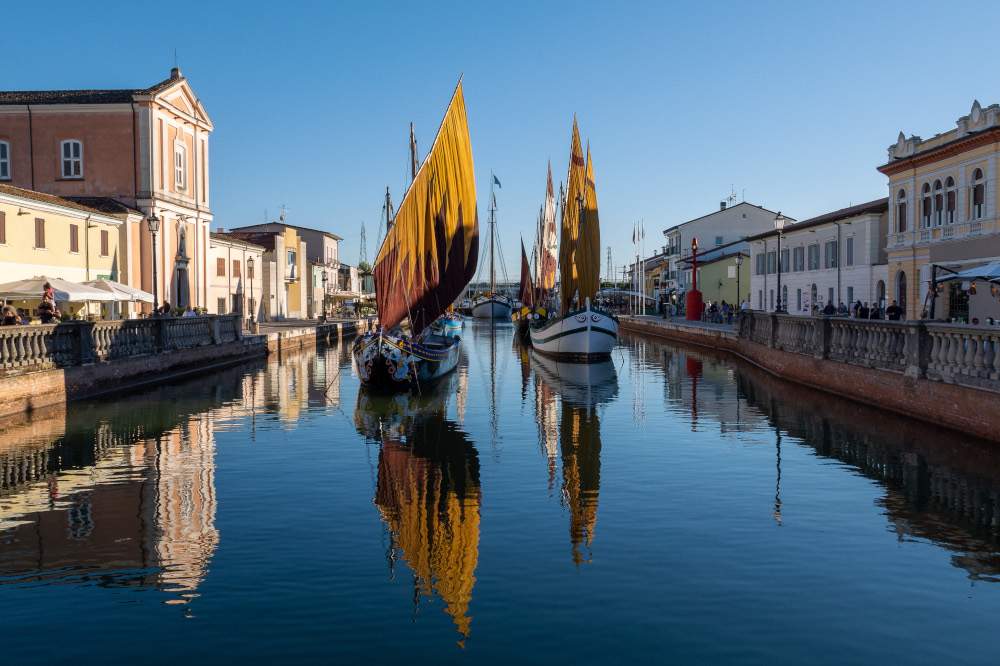
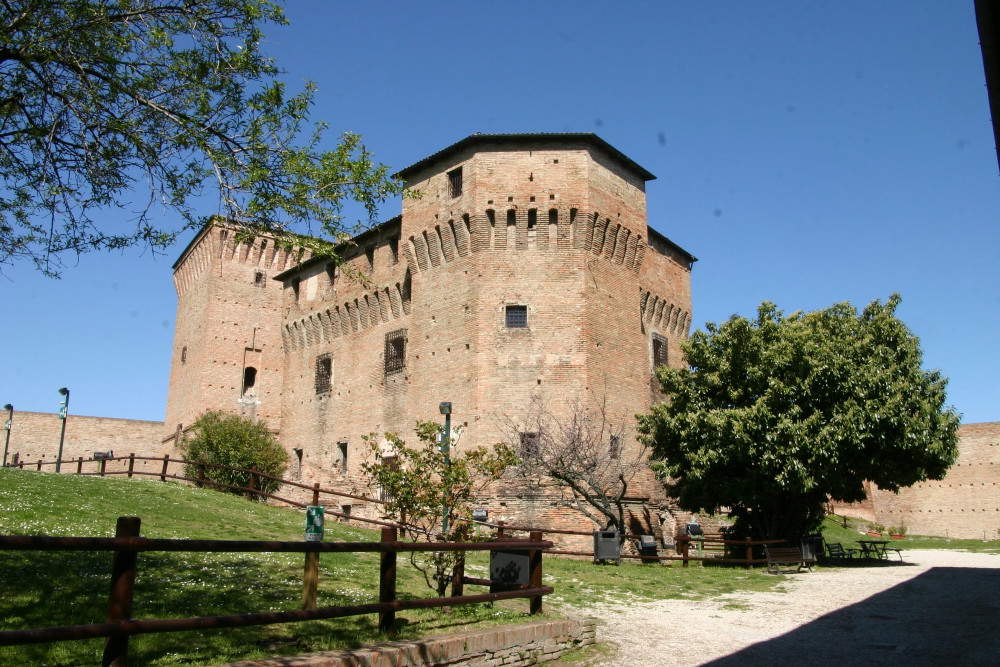
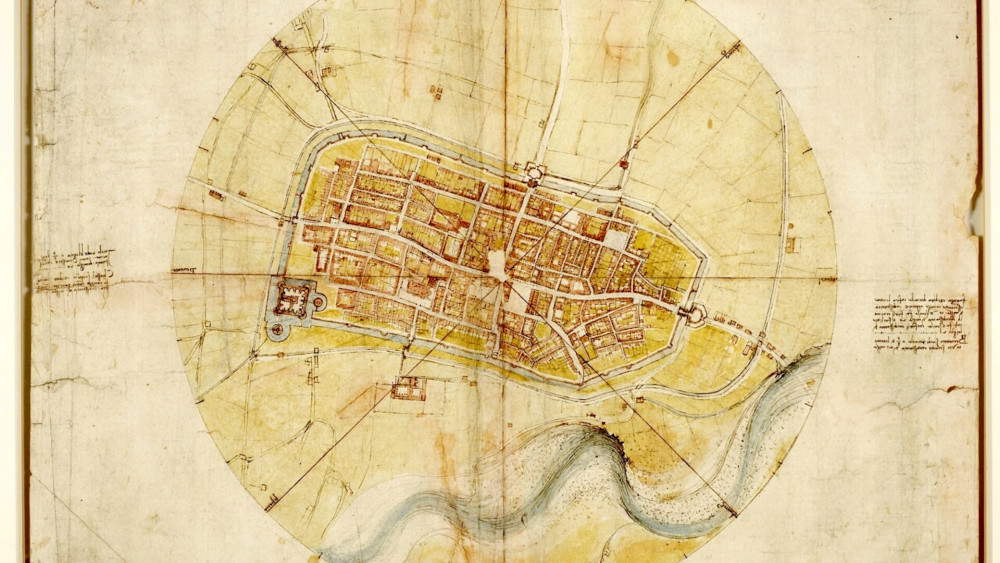
Another itinerary, however, is dedicated to another member of the Borgia family, Lucrezia, sister of the aforementioned Cesare, which narrates the route taken by Lucrezia Borgia on February 1, 1502, together with her sister-in-law Isabella of Mantua, to reach her newlywed husband Alfonso I d’Este in Ferrara. The journey of Lucrezia Borgia: an itinerary through art, history and nature begins in the town of Malalbergo, in the province of Bologna, to which an episode in Lucrezia’s life is linked. Daughter of Pope Alexander VI, Lucrezia Borgia married Duke Alfonso d’Este by proxy in Rome in 1502. A long and magnificent procession then left Rome on January 6, crossed Umbria and Romagne, and arrived at the end of the month in the capital of the duchy of Este, where Ercole I, duke of Ferrara, had prepared a sumptuous reception. In Malalbergo, Lucrezia Borgia met her sister-in-law Isabella, marchioness of Mantua, and together they resumed their journey to Ferrara by boat. Through the navigable canals she arrived at Torre della Fossa accompanied by a large court, and here a memorable encounter took place: the two newlyweds met right here. The bride disembarked from the boat on the canal bank and kissed the hand of the duke, who cordially reciprocated; she then boarded the sumptuous Este bucintoro (state galley) bound for Ferrara, while a large number of Este courtiers and gentlemen accompanied her by riding on the banks. In the evening Lucrezia lodged in Alberto d’Este’s palace in the Borgo di San Luca, on the other bank of the Po, opposite the Porta San Paolo, and the next day, after crossing the Castel Tedaldo bridge, she entered the city.
There are several places in Ferrara associated with her: first and foremost the Castello Estense, where Lucrezia Borgia and Alfonso I d’Este lived for a full seventeen years. Alfonso continued the work of renovating the castle already undertaken by his father Ercole, supported by the court architect Biagio Rossetti. He had the duchess’s apartment remodeled, other wings and rooms of the castle accommodated, the great ducal kitchens completed, and the apartment-studio that had been his father’s, on the Via Coperta, modified and enlarged, creating the Camerini dorati o d’alabastro, a true decorative program on which the greatest artists of the time were called upon to collaborate, such as Titian, the Dossi brothers, Antonio Lombardo, Raffaello Sanzio and Giovanni Bellini.
At Casa Romei, now a museum, Lucrezia retired for periods of prayer and meditation. Masterpieces by Donatello, Francesco del Cossa, Bastianino, and Alfonso Lombardi are now housed here, while the rooms on the ground floor still preserve the original Gothic-style decoration, especially in the Hall of the Sibyls. In the Corpus Domini Monastery, on the other hand, is her tomb; in addition to her, other members of the d’Este family are buried here: Ercole II, Eleonora of Aragon, Alfonso I, Alfonso II, Eleonora (daughter of Alfonso I) and Lucrezia (daughter of Ercole II), both nuns in this monastery. Finally, at Palazzo Schifanoia, symbol of the Ferrara of the Este and guardian and of the wonderful frescoes in the Salone dei Mesi, there is a portrait of Lucrezia in the medagliere.
For more information on itineraries dedicated to Renaissance Romagna, visit the Visit Romagna website
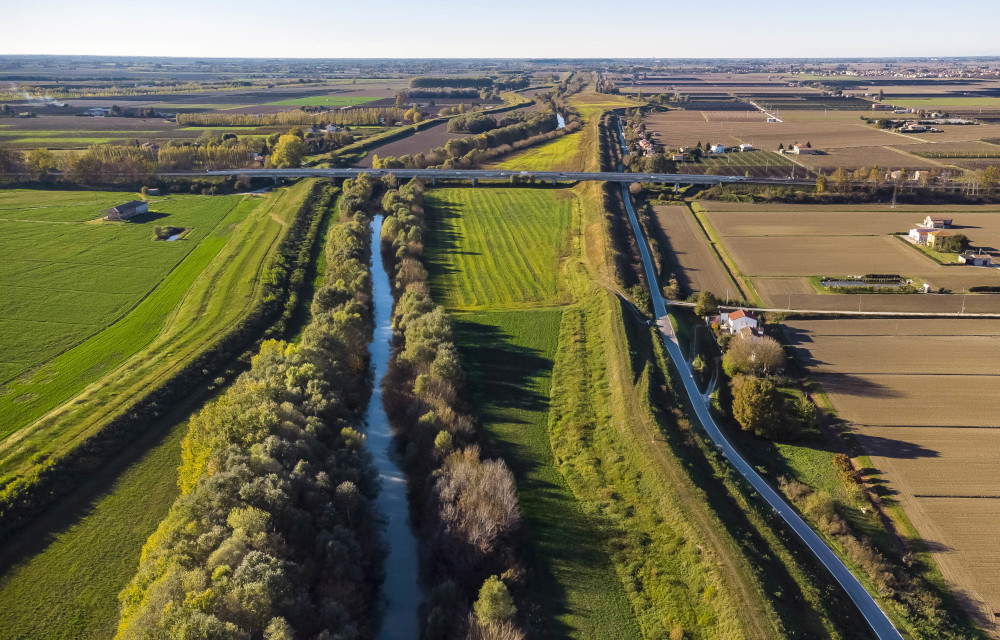
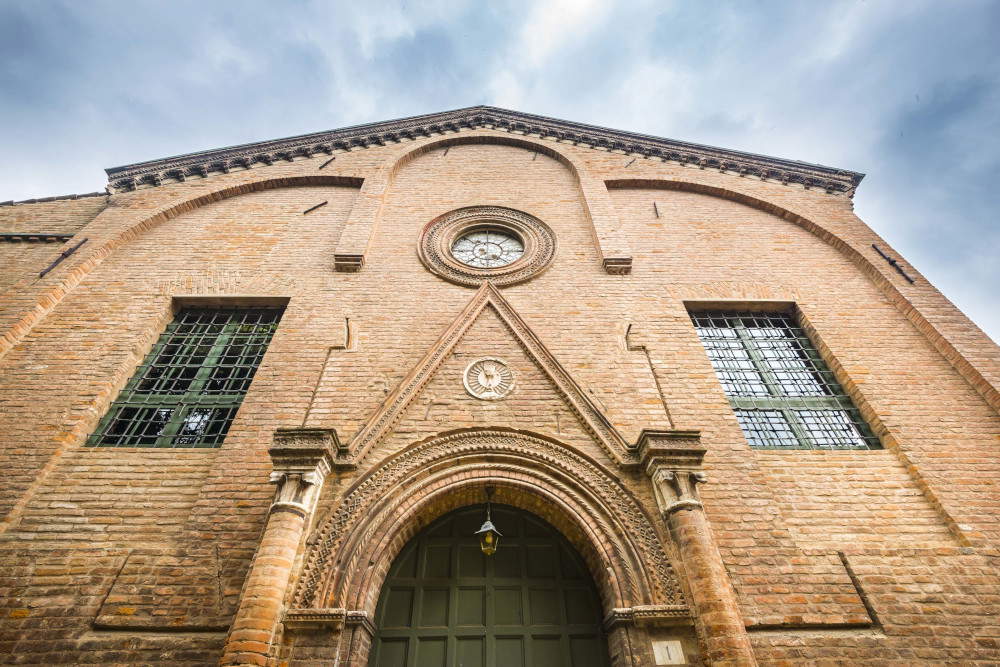
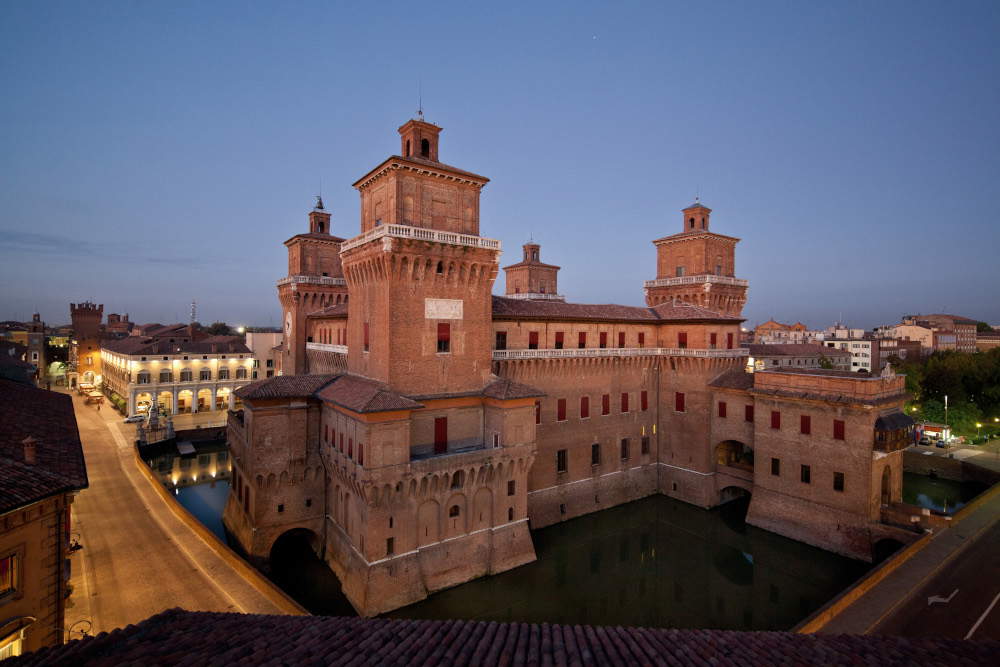
 |
| Renaissance Romagna: on the trail of Leonardo da Vinci and Lucrezia Borgia |
Warning: the translation into English of the original Italian article was created using automatic tools. We undertake to review all articles, but we do not guarantee the total absence of inaccuracies in the translation due to the program. You can find the original by clicking on the ITA button. If you find any mistake,please contact us.



























